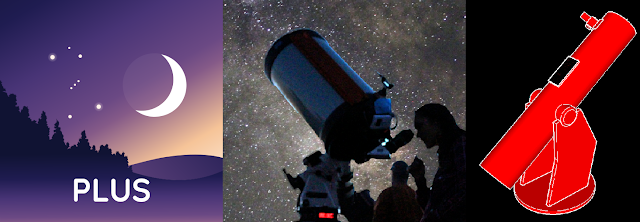Stargazing Made Simple: The Best Mobile Apps for Identifying and Locating Stars
The way we explore and comprehend the night sky has been completely transformed by technology. Astronomy enthusiasts now have strong tools available at their fingertips to explore the cosmos thanks to the development of cutting-edge software and smartphone applications. In this post, we will examine three well-liked astronomy-related apps that improve our stargazing experiences and give us useful knowledge and direction. These apps are Stellarium, AstroHopper, and NightShift.
- Stellarium: Stellarium is a well-known open-source planetarium software that displays the cosmos on your computer. With the help of this feature-rich application, users can simulate the night sky in real-time and view celestial objects like stars, planets, constellations, and even nebulae in incredibly precise detail. Users can change variables like time, place, and viewing viewpoint with Stellarium's customisable options. It is a priceless instructional tool for both beginning and experienced astronomers thanks to its simple user interface. Stargazers can't live without Stellarium thanks to its extensive database and ability to simulate celestial phenomena like eclipses and meteor showers.
- AstroHopper: AstroHopper is a web application that helps astronomers locate celestial objects precisely by using the push-to approach. AstroHopper offers detailed instructions to direct telescope motions and align with desired objectives by combining physical input and technology. The user enters the location of the telescope and chooses a target object from the vast database of the programme. Azimuth and elevation adjustments are then generated by AstroHopper, assisting users in manually moving their telescopes to align with the target. This technique makes it possible to navigate precisely and improves the experience of stargazing by making it easier to find celestial objects, especially those that are difficult to find or dim.
- NightShift: NightShift is a mobile application that gives real-time astronomical information and an overview of current conditions. NightShift uses weather, moon phase, and light pollution levels to identify the best time for stargazing. The software provides a detailed sky forecast, letting users to schedule their viewing periods accordingly. It gives information such as cloud cover, visibility, and atmospheric conditions to astronomers, allowing them to make informed judgements about when and where to examine the night sky. NightShift also provides an overview of astronomical occurrences, including planet, star, and other celestial object locations. NightShift is a great tool for astronomy fans looking for the finest opportunities for stargazing and staying informed about current astronomical events, thanks to its user-friendly layout and up-to-date information.

Comments
Post a Comment